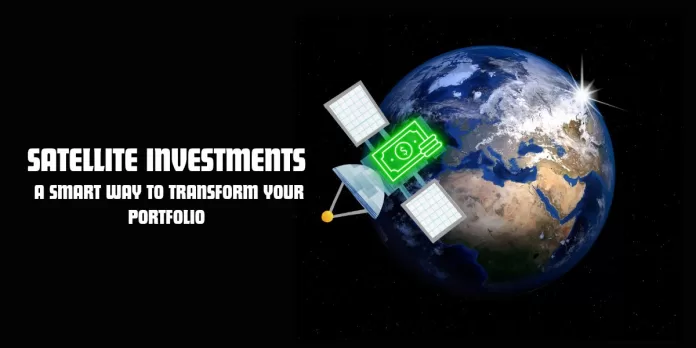Imagine your mutual fund portfolio as a cosmic system, with the sun at its core symbolizing stability through broad index funds. Orbiting around are satellite funds, adding diversity and potential for growth. This balanced approach caters to all investors, from conservative to aggressive, providing a flexible and cost-effective investment avenue.
The allocation between core and satellite funds depends on your risk tolerance, investment horizon, and overall financial goals.
The Benefits of Core and Satellite Investing Diversification: Core and satellite investing diversifies your portfolio across different asset classes, reducing overall risk and enhancing returns.
- Cost-Effectiveness: Core funds, being passively managed, have lower fees compared to actively managed satellite funds, keeping overall expenses in check.
- Flexibility: The core and satellite approach allows you to adjust your portfolio according to market conditions and your evolving financial goals.
Constructing Your Core and Satellite Portfolio Core
- Funds: Allocate the majority of your portfolio to core funds, typically comprising 70-90%. Choose index funds that track broad market indexes, such as the Nifty or the Total Stock Market Index.
- Satellite Funds: Invest the remaining 10-30% in satellite funds based on your risk tolerance and investment goals. Carefully research and select actively managed funds with a proven track record.
- Rebalancing: Regularly review your portfolio’s asset allocation and rebalance it to maintain the desired proportion between core and satellite funds.
Hypothetical Portfolio
Core Portfolio (70%):
- Stock Market Index Funds (40%): Invest in low-cost index funds that track broad market indices (like Nifty), providing diversification across stocks.
- Bond Funds (30%): Allocate a portion to bond funds for stability and income, balancing the risk associated with stocks.
Satellite Portfolio (30%):
- Individual Stocks (15%): Take a calculated risk by selecting individual stocks based on thorough research and a long-term investment outlook.
- Renewable Energy Stocks (10%): Allocate a portion to the growing sector of renewable energy for potential growth and sustainability.
- Technology Sector ETFs (5%): Explore exchange-traded funds (ETFs) focused on the technology sector, providing opportunities for targeted growth.
Remember, adjust allocations based on your risk tolerance, financial goals, and market conditions. Regularly review and rebalance your portfolio as needed.
Tips for Successful Core and Satellite Investing
Understand Your Risk Tolerance: Before diving into core and satellite investing, assess your risk tolerance and choose a core-to-satellite ratio that aligns with your comfort level.
- Do Your Research: Thoroughly research both core and satellite funds before investing. Analyse their historical performance, fees, and investment objectives.
- Seek Professional Guidance: If you’re a novice investor, consider seeking guidance from a financial advisor who can help you construct a customized core and satellite portfolio.
- Core and Satellite Investing: A Journey of Investment Harmony The core and satellite approach is a harmonious blend of stability and growth, a testament to the power of diversification and strategic asset allocation.
Let’s consider a hypothetical scenario to illustrate the potential boost from a satellite investment to a core portfolio in the context of core-satellite investing.
Know: A Proactive Approach to Portfolio Management
Scenario:
- Core Portfolio (70%):
- Core investment in an index fund tracking the Total Stock Market Index. (Broad Market Index like Nifty)
- Initial Investment: Rs. 7,00,000 (70% of the total portfolio).
- Satellite Portfolio (30%):
- Satellite investment in an actively managed fund focused on a specific sector (e.g., technology).
- Initial Investment: Rs. 3,00,000 (30% of the total portfolio).
Performance Over One Year:
- Core Portfolio Return:
- Assuming a 10% return on the core investment.
- Core Portfolio Value after One Year: Rs. 7,00,000 + (Rs. 7,00,000 * 0.10) = Rs. 7,70,000.
- Satellite Portfolio Return:
- Assuming a higher return of 15% on the satellite investment due to active management.
- Satellite Portfolio Value after One Year: Rs. 3,00,000 + (Rs. 3,00,000 * 0.15) = Rs. 3,45,000.
Total Portfolio Value After One Year:
Rs. 7,70,000 (Core) + Rs. 3,45,000 (Satellite) = Rs. 11,15,000.
Boost from Satellite Investment:
Rs. 11,15,000 (Total Portfolio Value) – Rs. 10,00,000 (Initial Portfolio Value) = Rs. 1,15,000.
In a world where everything was confined to an index fund, the return would have been a steady 10%. However, the strategic inclusion of a satellite investment played the hero, providing an additional return of 1.5%. This dynamic duo didn’t just settle for average – their weighted synergy resulted in a stellar 11.5% return.
By embracing this strategy, you can navigate the mutual fund universe with confidence, aiming for long-term investment success.
Read:


